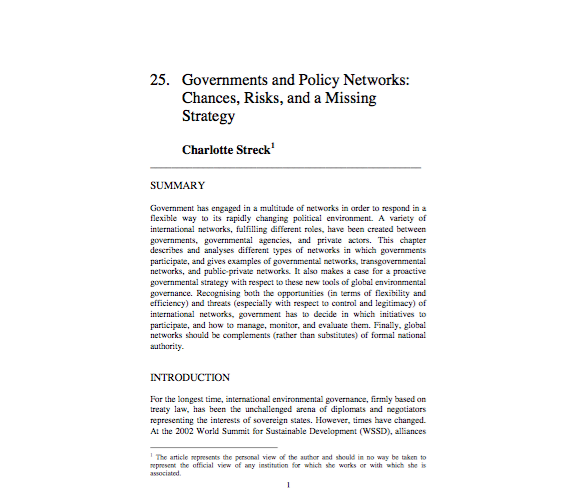Government has engaged in a multitude of networks in order to respond in a flexible way to its rapidly changing political environment. A variety of international networks, fulfilling different roles, have been created between governments, governmental agencies, and private actors. This chapter describes and analyses different types of networks in which governments participate, and gives examples of governmental networks, transgovernmental networks, and public-private networks. It also makes a case for a proactive governmental strategy with respect to these new tools of global environmental governance. Recognizing both the opportunities (in terms of flexibility and efficiency) and threats (especially with respect to control and legitimacy) of international networks, the government has to decide in which initiatives to participate, and how to manage, monitor, and evaluate them. Finally, global networks should be complements (rather than substitutes) of formal national authority.
Governments and Policy Networks: Chances, Risks and a Missing Strategy



